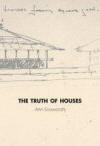The Truth of Houses
Ann Scowcroft’s debut collection overlays simple language with the depth and complexity of family relationships. Centered in interactions with family and close friends, Scowcroft captures a sense of regret in presenting broken and austere images of the home. The Truth of Houses demonstrates how a poet can explore how relationships continuously change throughout the course of a life, providing rich and multifaceted people that populate its pages.
Ann Scowcroft’s debut collection overlays simple language with the depth and complexity of family relationships. Centered in interactions with family and close friends, Scowcroft captures a sense of regret in presenting broken and austere images of the home. The Truth of Houses demonstrates how a poet can explore how relationships continuously change throughout the course of a life, providing rich and multifaceted people that populate its pages.
Throughout the collection, we begin to piece together the moments illustrated in individual poems, forming a clear picture of the speaker and her relationships. Poignant images illuminate the speaker’s relationship with her parents, as she employs sparse language to articulate her father’s illness. In “Phantom,” the speaker addresses herself in second person, thinking of the “Thinness of your father’s legs before you admit / he is dying, / wobbly stalk of your month-old child.” She writes to her mother in “Letter to my mother,” showing words unsaid (actually her mother’s emphysema) as
decades
of clauses caught in the soft spots of our throats
where the skin is supple and concave;
they have massed in our vocal chords
disorderly, unruly—
sheer numbers make it difficult to breathe.
With events taking place over a long stretch of time, the poet pays careful attention to how relationships unfold throughout the collection. The long poem (Palimpsest) continues the speaker’s relationship with her mother over a series of sixteen short poems. The poems enact this kind of scraping off and rewriting use of the palimpsest, such as in the fourth section, “whether it is appropriate to claim that an event is only meaningful in context,” where the speaker reimages herself as a child. In order to forget abuse she endured by her great uncle, the child “watches him without watching,” with “enough of the child left in her / at this moment to believe / what she cannot see does not exist.” Later in the sequence, when the speaker confronts her mother about the abuse, the mother only says “He did that to me too. The moment during which all oxygen / departed the planet only seemed long.”
Yet, despite the difficulties of childhood, resonant images come to the fore. In “Quotidian,” the speaker claims
In this square old house with warped wooden floors
and prim wainscoting, we have sown
plenty that slips between the cracks,
like so much birdseed spilled on the way in the door.
This residual pain in memory pervades these poems, yet there still remains a fervent desire to continue on, to persevere despite the unveiling of the truth.





